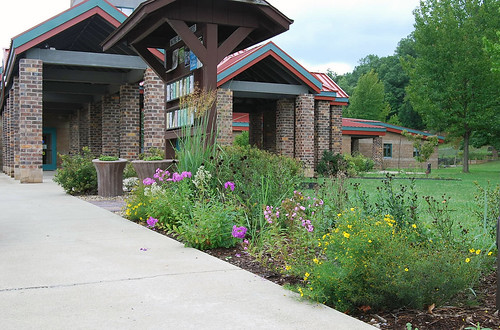
Next time you’re in the Midwest and thinking of hiking, all-terrain vehicle riding, mountain biking or horseback riding, visit the Wayne National Forest in the hills of southeastern Ohio. It’s there you’ll find more than 300 miles of trails to do those things and much more.
Another special feature is at the forest’s headquarters near Nelsonville, Ohio: A USDA People’s Garden.
The U.S. Department of Agriculture began the People's Garden Initiative – named in honor of President Lincoln's description of USDA as the "People's Department" – in 2009 as an effort to challenge employees to create functioning gardens at USDA facilities.
Today, People's Gardens vary in size and type but all are required to have three components in common: benefit the community, be collaborative and incorporate sustainable practices. People's Gardens have expanded to all 50 states, three U.S. territories and eight other countries. There are now more than 1,800 People’s Gardens, some at other U.S. Forest Service facilities.
The Wayne National Forest gardens were created as part of a project to preserve local native plants and their genetics in anticipation of a highway bypass construction through the forest. The garden includes a native prairie, shade and several pollinator gardens.

The garden provides an abundance of foraging and cover habitat for birds and small mammals. Monarch butterflies have been seen laying their eggs on the native milkweeds -- the required food for the developing caterpillars. Bluebirds raise their young in a bird box in the prairie and many native pollinators are seen visiting the flowers throughout the season.
Rural Action, a local nonprofit organization, and Hocking College partnered with the forest to create the initial gardens. Over the years, additional partners have helped expand the gardens and surrounding area with native tree saplings. Fruit trees were also planted to provide food in the future for local food banks.
A trail winds through and interpretive signs are posted throughout the gardens to help educate forest visitors about the importance of native plants and pollinators.
